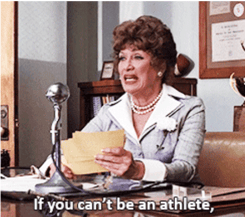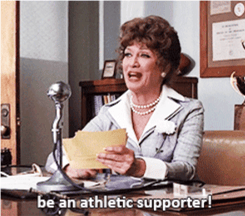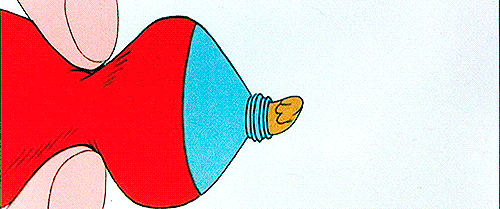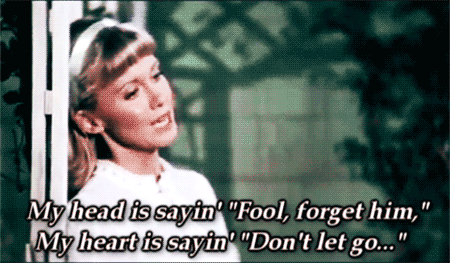Why It Pays to Disqualify More During Your Lead Qualification Process
October 16, 2018Last updated on October 1, 2024

A well-qualified lead is worth its weight in gold. But how much is letting poorly-fitting leads into your funnel dragging your sales team down?
A foot over the line. Leaving the lane. Jumping the gun with a false start.
Sports fans, in particular, know all about the heartbreak of a disqualification. The disappointment of their favourite athlete losing the point or being stripped of a medal. The feeling of what could have been when they’re thrown out of competition before it even begins.
In sales, though, disqualification is not something to be avoided.
It’s easy to see why salespeople might shy away from it, though. Even if they’re not an, ahem, athletic supporter.


For a healthy sales funnel, disqualifying leads is as valuable a task as qualifying leads. More leads in the top of the funnel does not necessarily mean more sales at the bottom.
Each member of your sales team needs to be a lead generation referee, with their (figurative) disqualification whistle at the ready.
Let’s break down the true costs of bad leads
It may seem like you’re losing out on sales opportunities through lead disqualification. But it’s actually the opposite.
If you’re not doing enough disqualification, you’re straight-up losing money.
A lot of lead qualification processes tends to look for the positive, especially in cases where a customer self-identified as a possible lead. Your salespeople may assume that because they came to you they are in need of your solution.
So they tick that box on the sales readiness list and continue. Yes, they are looking to buy now. Yes, they have a budget. Yes, I’m talking to the decision-maker.
Yes, yes, yes. Into the funnel they go? Not so fast.

Though leads who come to you may be a few steps further into the buying journey, you have to know they’re going to go the distance.
If your team is letting leads in that are not a good fit, they’ll end up costing you more than you ever make from them. Here are a few of the major ways that could happen.
Wasted sales rep time
Maybe the lead hits the right mix of the basics. Your team is likely using a lead qualification framework as part of the sales process.
Your product or service is not going to be right for everyone. Saying so is valid. After all, truth earns trust. Sales rep time is money and qualifying for the sake of quantity wastes both.
Sales reps should know how much they need to be bringing in each week or month to hit their quota. At a certain point, sales revenue will take a hit if reps get too distracted by leads that are going nowhere fast.
Your sales reps should be disqualifying about 20 percent of the leads coming through to them. If they disqualify less than that, they could be letting subpar leads through.
If they routinely disqualify more than 20 percent, or spend a disproportionate amount of time on lead qualification, that could signal that there is something off with your lead generation activities.
Look at the alignment between sales and marketing. Asking a few questions and acting on the answers will get more high-quality leads flowing in:
- Are sales and marketing in agreement about what a marketing qualified lead and a sales qualified lead looks like?
- How are you positioning your company to potential customers?
- Are your buyer personas up-to-date? Are they being used to reach the right audiences?
As the leads come in, keep your salespeople from wasting time and resources by instilling a disqualify first mindset. Leads only move into the sales funnel if they have a high probability of closing AND being an ideal customer.
Churning and resource-hungry clients
Speaking of ideal customers—and their opposite.
Let’s talk about those poor-fitting leads that, miraculously, did make it all the way through the funnel and actually converted.
These poor-fit-leads-turned-customers are more likely to leave early, not renew, and never become a repeat or frequent buyer.
They are also more likely to become your pain-in-the-behind customers. You know, the ones who are never happy and who eat up support resources.
By the way, these types of customers can also be perfectly-fitting leads who are just plain-old jerks. Their behaviour is never going to change, so your reps should be looking to weed this type of poor-fit out early, too.

It’s a trap to think about jerky clients, support parasites, and customer turnover as just the cost of doing business.
Yes, some churn is natural. And, yes, in many companies, reducing churn is a big focus for customer success and support teams.
As a sales manager, though, you do have control over the kinds of customers you bring on board. And that makes you and your sales team the first line of defense in keeping poorly fitting clients off your roster and customer churn to a minimum.
Think about it this way: when the poor-fit customers do leave, they take not only their revenue from that month and year, but also the possible revenue that could’ve come in if they’d stuck around for a few years.
Your best and happiest customers, the ones your reps worked so hard to close, could end up getting the short shrift because the poor-fit, squeaky wheel clients are getting all the support grease.

Tarnished reputation
A good lead disqualification process doesn’t just save your team time and prevent customer churn. It also affects your reputation in the marketplace.
Disqualifying leads before they enter your sales funnel is the all-around best option. But, if poor-fit leads do slip in, the faster they get weeded out the better.
It’s not just customers who churn that you have to worry about. The later a lead is disqualified, the more likely the whole experience is to leave a bad impression on them as well.
People have a tendency to publicize their thoughts on their interactions with companies. Social media, in particular, makes it easier than ever to have your say.
Studies have shown that happy customers tell about three people about their good experience. Unhappy leads and customers can tell up to seven times that many people about their poor experience.
It’s unlikely that your company can afford to take an exponential hit in word-of-mouth marketing like that. That translates to turning off upwards of 21 potential ideal customers because of one poor fit.
This means that telling a lead to get lost the right way is an art form in and of itself. When a lead falls into the ‘never’ category, a sales rep can politely decline to pursue the dead-end lead further.
But what about those leads that are a ‘not right now’? You want them out of your sales funnel (so your team can focus on hotter leads) but not so far away that you can’t keep them in the loop in case circumstances change.

Adding them to your email newsletter list is one way to keep your company top of mind in the meantime.
If the disqualifying factor is something that may change, salespeople should try not to burn any bridges. The lead may become workable again if the budget or timeline changes.
Inaccurate forecasting
The more bad leads in your funnel, and the longer they stay in there, the more your metrics will be misrepresented.
Your metrics for sales cycle length become distorted.
Your conversion rates at each stage of the funnel, not just the bottom, will be off.
Your sales funnel looks leakier than normal, as the poor-fit leads leave further down the funnel.
Basically, your ability to do accurate sales forecasting will take a big hit.

Sales managers like you thrive on metrics. Making decisions based on misrepresented numbers like these could have you leading your sales team in the wrong direction.
In a hard goods setting, it could lead to a surplus or shortfall of materials and inventory, which could weaken your company’s relationships with suppliers and other vendors.
It’s not just sales reps who should shoulder the blame for allowing these poor-fit leads to distort your metrics. If they’re doing it to hit unrealistic targets, everyone involved in setting those goals needs to shoulder some responsibility.
When the unrealistic targets are based on a process that doesn’t include a strong disqualification process, it becomes a vicious circle that needs a sea change in the lead qualification process to fix.
How much could not disqualifying leads end up costing you?
Even after all this evidence of how much poor-fit leads can hurt your sales, waste your sales reps’ time, and drag your business name through the mud, you still might not be convinced.
You might be thinking, “So a few bad leads sneak into our sales funnel. What’s the big deal?”
The big deal is that even a 10% increase in poor leads can mean big costs. There’s something about seeing the cost in a dollar amount that can persuade the most skeptical of skeptics.
Which is why we made this calculator for you. With a few data points specific to your sales team (that you likely know off the top of your head) you can quickly see the total revenue that your team could be losing, wasting, or otherwise missing out on.
No need to worry if the totals are scarily high. Next week is the second part of our lead qualification series and it’ll serve up tips for increasing your lead qualification efficiency and accuracy.




